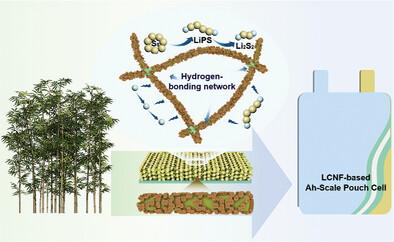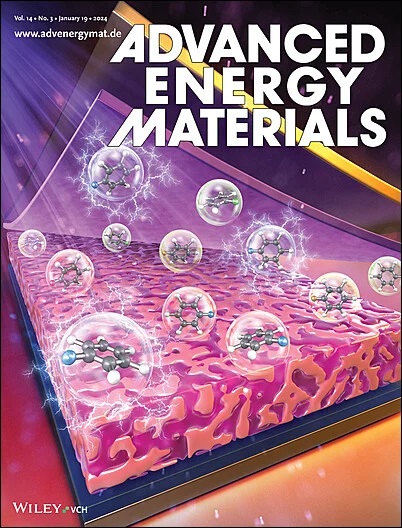Engineering of Lignocellulose Pulp Binder for Ah‐Scale Lithium–Sulfur Batteries
IF 24.4
1区 材料科学
Q1 CHEMISTRY, PHYSICAL
引用次数: 0
Abstract
Natural binders play attractive roles in stabilizing lithium–sulfur (Li–S) battery systems due to their polymeric skeleton and abundant functional structures, but the complex extraction and modification hinder the practical use. Here, lignocellulose, the unbleached product of the pulp industry, is directly developed as a robust binder in Li–S batteries. Benefiting from various oxygen‐containing functional groups woven strong hydrogen‐bonded network framework, robust mechanical stability, lithium polysulfide anchoring capacity, and high‐speed Li

求助全文
约1分钟内获得全文
求助全文
来源期刊

Advanced Energy Materials
CHEMISTRY, PHYSICAL-ENERGY & FUELS
CiteScore
41.90
自引率
4.00%
发文量
889
审稿时长
1.4 months
期刊介绍:
Established in 2011, Advanced Energy Materials is an international, interdisciplinary, English-language journal that focuses on materials used in energy harvesting, conversion, and storage. It is regarded as a top-quality journal alongside Advanced Materials, Advanced Functional Materials, and Small.
With a 2022 Impact Factor of 27.8, Advanced Energy Materials is considered a prime source for the best energy-related research. The journal covers a wide range of topics in energy-related research, including organic and inorganic photovoltaics, batteries and supercapacitors, fuel cells, hydrogen generation and storage, thermoelectrics, water splitting and photocatalysis, solar fuels and thermosolar power, magnetocalorics, and piezoelectronics.
The readership of Advanced Energy Materials includes materials scientists, chemists, physicists, and engineers in both academia and industry. The journal is indexed in various databases and collections, such as Advanced Technologies & Aerospace Database, FIZ Karlsruhe, INSPEC (IET), Science Citation Index Expanded, Technology Collection, and Web of Science, among others.
文献相关原料
公司名称
产品信息
阿拉丁
Ketjen black
阿拉丁
lithium sulfide
阿拉丁
sulfur powder
阿拉丁
sodium hydroxide (NaOH)
阿拉丁
Maleic anhydride (MAH)
 求助内容:
求助内容: 应助结果提醒方式:
应助结果提醒方式:


